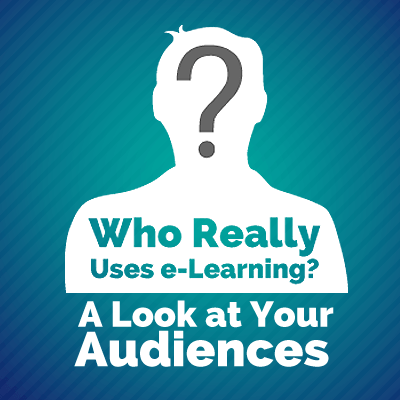Do an audience analysis right away. One of the first parts of your planning stage should be an audience analysis. This will help you determine the basic structure of your course, along with the smaller details. Ask yourself the following questions in your audience analysis:
- What is the age of my audience?
- How comfortable with technology is my audience?
- Will my audience be accessing e-Learning with a desktop computer or a mobile device? What size is that device?
- Does my audience have any disabilities?
- Does my audience speak a different language or live in a different country and culture than me?
Your audience analysis will help you think about who’s really going to be using your e-Learning. Here are a few audiences and how to best design for them:
Generation Y
This audience is anyone born after 1980. Generation Y is usually tech savvy, but they also have limited patience. Allow them to be in control—scenarios are good for this. Games will hold their engagement; just make sure they’re purposeful. To learn more, check out this blog post: Designing Online Training for Generation Y.
Non-Digital Natives
Just because this audience didn’t grow up using computers doesn’t mean that they don’t know how to use one. We all crave interactivity. Don’t think you have to make a boring course for the non-digital native audience. In addition, don’t make your learners sit through a 10-minute tutorial on how to click the mouse. That’s insulting and often unnecessary. Get ideas on designing engaging training here: Compliance Training Doesn’t Have to Be Boring.
Performance Support Users
If your audience is accessing training materials for performance support, you’ll need to remember two things. First, your audience is most likely using a mobile device, so you’ll need to design for that. Second, the information must be quick to access; as few clicks as necessary is ideal. For more performance support resources, check out this article: How to Create the Best Performance Support System.
Learners with Disabilities
It’s always best to design an e-Learning course for accessibility so that all your learners can use it comfortably. For example, you may not know that one of your learners is hard of hearing, so adding a text transcript of audio files is a good way to make sure no one misses out on any course content. Use the resources in this blog post to help: Thursday’s Trending e-Learning Topic: Accessibility.
Global Users
You may need to localize your course to get it ready for a different language and culture. To make this easiest, keep this in mind throughout the entire development process. This will make it much easier when you get to the translation step. Here are a few tips for getting your course ready to translate: 4 Tips for Translating and Publishing e-Learning Courses.
Do an audience analysis before you create your next online training course. That way, you’ll be able to design for the people who are really using your e-Learning!
Looking for an e-Learning authoring tool that can help you create courses for your audience? Sign up for a free 30-day trial of Lectora® Inspire today!









